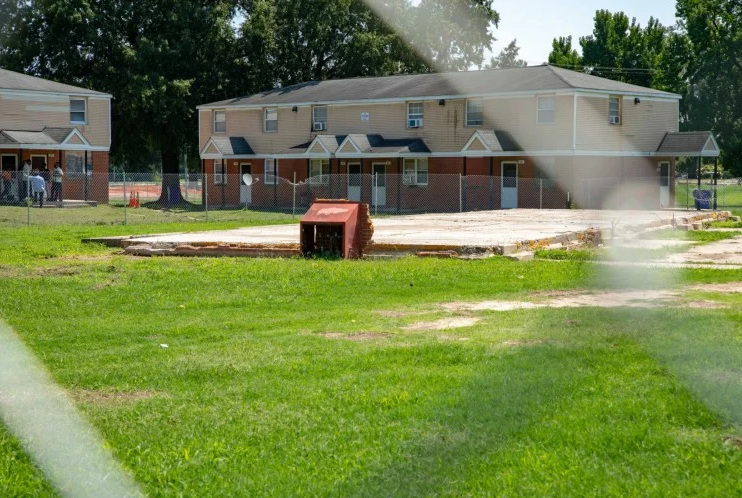
UPDATE 08.12.2022: The original story is no longer available. RRHA thanks VPM News Director Elliott Robinson for his responsiveness and accountability. The updated article is titled “Creighton Court demolition met with mixed feelings” and was backdated to August 4, 2022. RRHA still encourages readers to read through the facts outlined below by Eddie Jackson, Jr., RRHA Board Commissioner.
The below article is RRHA’s official response to the original story published on August 4, 2022, titled “Creighton Court demolition moves forward without firm plans for low-income housing.”
Dear Virginia Public Media,
Richmond Redevelopment and Housing Authority looks to Virginia Public Media (VPM) for fair and balanced reporting.
The following piece, however, raises serious concerns about the accuracy of its reporting. The article is dated August 4, 2022 and entitled “Creighton Court demolition moves forward without firm plans for low-income housing.”
Please take note of the facts below that address the misinformation in the article. The article, unfortunately, provides a distorted view of the information that was shared with Meg Schiffres by RRHA’s Vice President of Real Estate and Community Development Mr. Desi Wynter, as well as information that has been shared throughout the life of this project, including the testimonies of those that spoke during the August 3rd “Creighton Court New Beginning Event.”
- To start, there are definitely firm plans for low-income housing for Creighton Court. The Community Builders and RRHA are working in a phased approach to developing new affordable housing units on the Creighton Court site. The start of redevelopment efforts began with RRHA working with the Creighton Court Tenant Council on establishing a document called the “Tenant Bill of Rights.” This document established that any resident living in Creighton Court had the right to return to the development site if that was their chosen relocation preference. This Bill of Rights was signed by Richmond Mayor Levar Stoney, RRHA CEO Marilyn Olds, and Richmond Council President Cynthia Newbille.
- The entire project was planned after an extensive Community Engagement period in which existing residents and stakeholders were engaged in the planning process for the new community. Resident engagement was the basis for creation of the plan that we are executing today.
- Additionally, RRHA and TCB have been having regular and ongoing community meetings on-site and virtually with the families of Creighton Court and community stakeholders. Quarterly newsletters are sent out to each family of Creighton Court to provide project updates along with the plan for redevelopment. In these meetings, residents are updated on the progress of the project and provided information on their housing options. The meetings inform the residents of what will be coming with the redevelopment efforts.
- The City of Richmond approved the Community Unit Plan (CUP) for Creighton Court which allows for the construction of up to seven hundred (700) units, of which approximately two hundred (200) will be deeply subsidized by Section 8 Project Based Voucher (PBV) units available to any family who wishes to remain on site. Each of these PBV units are reserved specifically for any family who wants to remain on the Creighton Court site. While this becomes a mixed income community, the overwhelming majority of such homes will be designated for affordable housing.
- RRHA also has received funding from state and federal partners to support future phases of this ongoing Creighton Transformation development.
- The phased approach begins with sixty-eight (68) units of which twenty-one (21) units are deeply subsidized with the use of Section 8 Project-Based Vouchers (PBVs). These units have been set aside for all the families who lived in the first phase of demolition and chose remaining on the Creighton Court site as their permanent relocation option. The remaining forty-seven (47) units will be 100% affordable through the Low-Income Housing Tax Credit (LIHTC) program and available to low-income families at or below 60% of AMI in the City of Richmond.
- The next phase of construction continues with a 72-unit, multi-family building of which 21 units are deeply subsidized with the use of Section 8, Project-Based Vouchers (PBVs). These units have been set aside for all the families who lived in the first phase of demolition and chose their permanent relocation option as remaining on the Creighton Court site. The remaining fifty-one (51) units will be 100% affordable through the LIHTC program.
- RRHA established a Build First strategy for Creighton Court through the development of the Armstrong Renaissance site with The Community Builders.
- The Build First strategy is a concept of developing new affordable housing before any demolition or redevelopment activity takes place on-site. At the Armstrong Renaissance, two hundred and ten (210) new units were developed of which one hundred and twenty-two (122) units are deeply subsidized PBV units.
- The PBV units were made available first to any family living at Creighton Court and forty-one (41) Creighton Court Families chose to live in this newly developed community.
- Other Creighton Court families have chosen to move to other off-site developments throughout the City of Richmond that have PBV units in them. RRHA has prioritized the use of 493 additional public housing project-based vouchers units in 27 off-site developments to ensure availability of affordable housing to our residents and to minimize the need for voucher-holders to extensively search for unsubsidized homes on the private market. Forty-nine (49) Creighton families have also relocated to these off-site public housing voucher units located at other properties.
- The vacant units onsite at Creighton Court are being utilized as temporary relocation units for the families at Creighton Court. This allows for a smoother transition to the redeveloped Creighton Court and allows families who have chosen a Tenant Protection Voucher (TPV) to remain on site should they need additional time to utilize their voucher.
- It should be noted that the supply of affordable housing is not decreased but increased by these efforts. When one combines the affordable housing added at Armstrong Renaissance, planned new affordable housing at the new Creighton Court, and the Creighton residents who have or will elect to accept Project Based Vouchers or Tenant Protection Vouchers, this results in significantly more affordable housing opportunities than when Creighton was fully occupied. Any representations that these efforts are resulting in less affordable housing are totally inaccurate.
Thank you for your dedication to balanced and accurate reporting. We look forward to your response to these concerns.
Regards,
Eddie Jackson, Jr.
RRHA Board Commissioner


